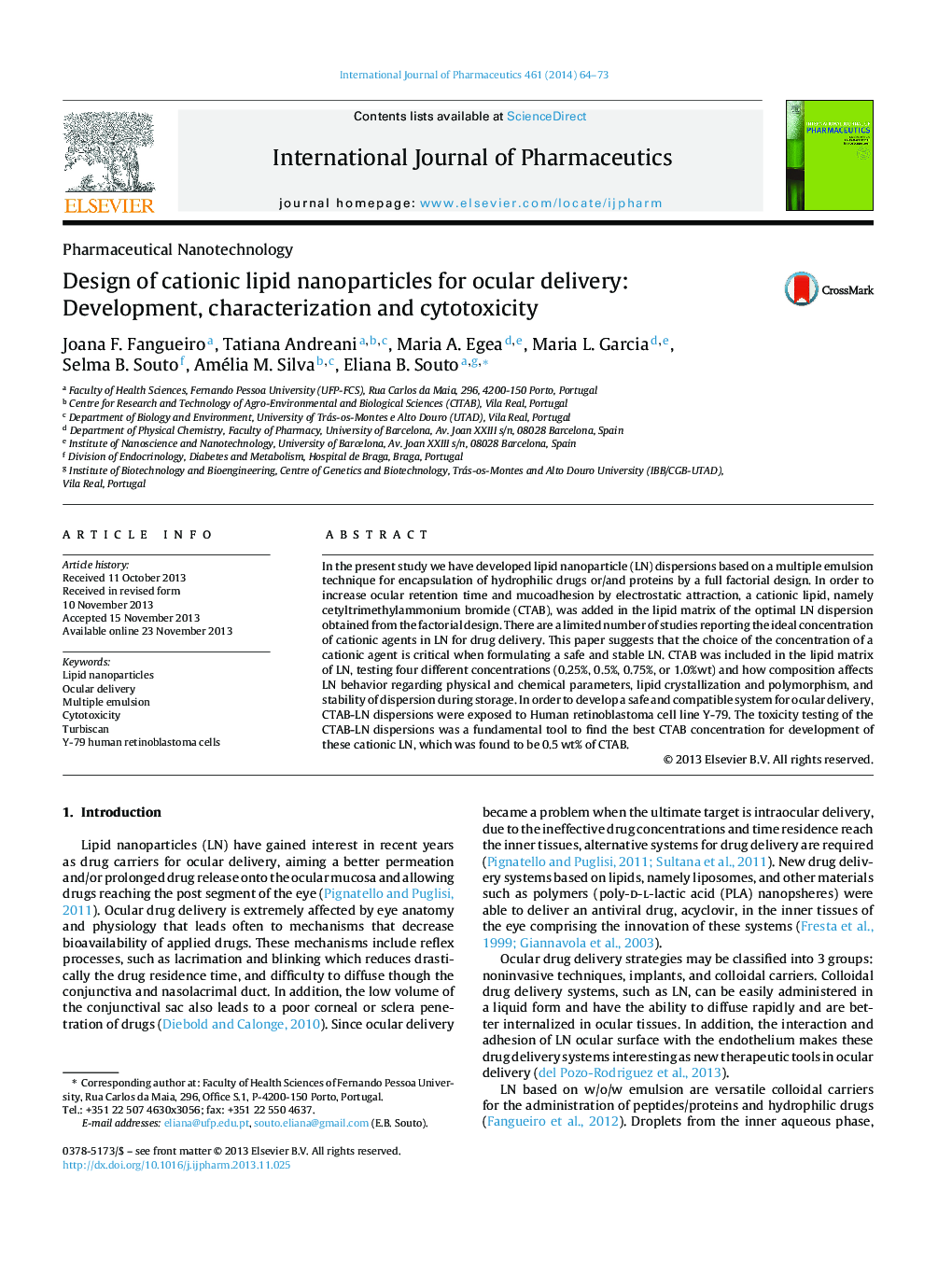| Article ID | Journal | Published Year | Pages | File Type |
|---|---|---|---|---|
| 2501953 | International Journal of Pharmaceutics | 2014 | 10 Pages |
In the present study we have developed lipid nanoparticle (LN) dispersions based on a multiple emulsion technique for encapsulation of hydrophilic drugs or/and proteins by a full factorial design. In order to increase ocular retention time and mucoadhesion by electrostatic attraction, a cationic lipid, namely cetyltrimethylammonium bromide (CTAB), was added in the lipid matrix of the optimal LN dispersion obtained from the factorial design. There are a limited number of studies reporting the ideal concentration of cationic agents in LN for drug delivery. This paper suggests that the choice of the concentration of a cationic agent is critical when formulating a safe and stable LN. CTAB was included in the lipid matrix of LN, testing four different concentrations (0.25%, 0.5%, 0.75%, or 1.0%wt) and how composition affects LN behavior regarding physical and chemical parameters, lipid crystallization and polymorphism, and stability of dispersion during storage. In order to develop a safe and compatible system for ocular delivery, CTAB-LN dispersions were exposed to Human retinoblastoma cell line Y-79. The toxicity testing of the CTAB-LN dispersions was a fundamental tool to find the best CTAB concentration for development of these cationic LN, which was found to be 0.5 wt% of CTAB.
Graphical abstractEffect of CTAB-LN (a) 0.25%; (b) 0.5%; (c) 0.75% and (d) 1.0% on Y-79 human retinoblastoma cells viability (n = 4) after 24, 48 and 72 h of exposure, *p < 0.05.Figure optionsDownload full-size imageDownload high-quality image (101 K)Download as PowerPoint slide
